A Spanish friend once taught me how to make a Spanish tortilla, a classic egg-and-potato dish. I, a naive American, had the nerve to suggest adding onions. He became very serious and replied sternly, "There are never onions in a Spanish tortilla."
That was my first lesson in understanding how strongly the Spanish feel about their food and perhaps there isn't a dish more divisive than paella in the Spanish repertoire. It has humble roots as a dish field workers made with whatever ingredients they had on hand. The paella we're familiar with on this side of the pond, often garnished with pricey ingredients such as lobster and saffron, isn't considered traditional. While what makes paella "authentic" can greatly vary, but here are a few guidelines:
- The socarrat the crispy, caramelized rice on the bottom of the pan, is the best part. This is what sets paella apart from other rice dishes.
- Medium-grain rice, also called bomba and often labeled "paella rice," is essential. This rice absorbs more liquid than other types and is less starchy than its Italian cousin, Arborio.
- Use a paella pan—you won't get the socarrat without one. The most common are made from carbon steel, which is similar to cast iron. When you're done cleaning it, dry it thoroughly and rub some oil all around it to keep it from rusting. The smallest pans are usually 13 to 15 inches in diameter and the biggest will feed dozens.
- Paella is prepared over an open fire or grill.
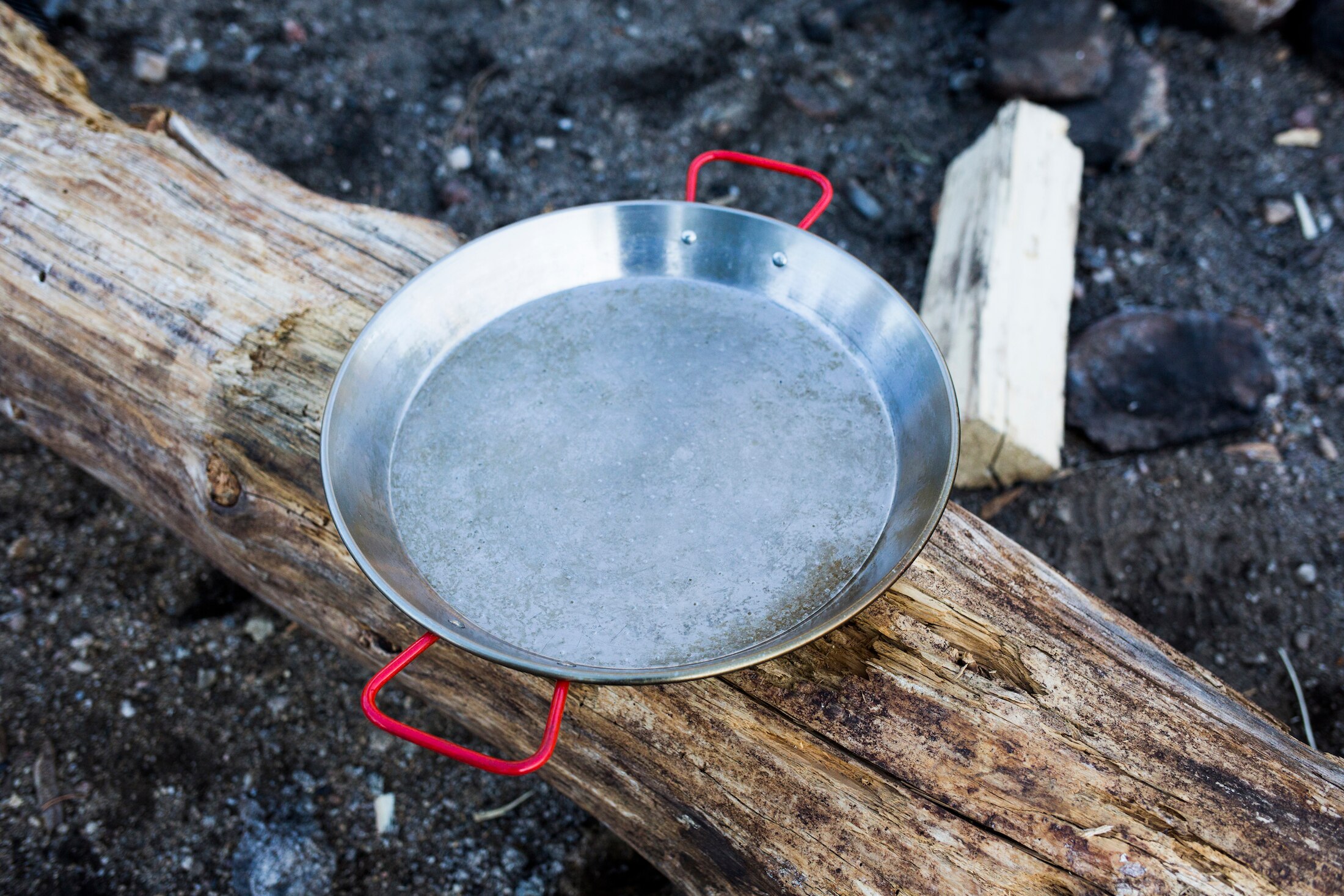
This last part is what makes paella particularly well suited for campfire cooking. It takes a bit more patience than roasting a weenie on a stick, but it can feed a crowd and easily be adjusted for individual tastes. You can be as simple or as elaborate as you'd like with the final toppings, choosing from a mix of poultry and seafood or a classic pairing of snails and rabbit (though not everyone appreciates hare in their food).
Recipe
Here's the recipe for a basic chicken and chorizo paella, with directions for optional add-ins if you're feeling fancy. The recipe is for a 13-inch paella pan.
Yield: Serves 4 to 6 people
Ingredients
- ¼ cup olive oil (bring extra to coat the pan after cleaning)
- 1 cup (dry) paella rice
- 1 yellow onion
- 3 green onions
- 1 red bell pepper
- 4 garlic cloves
- 1 14.5-ounce can of diced, fire-roasted tomatoes
- 3 cups chicken stock
- 1 pound chicken thighs
- 8 ounces of dried, Spanish-style chorizo
- 1 cup frozen peas
- 1 tablespoon paprika
- 1 teaspoon saffron (optional)
- Jar of piquillo peppers (or roasted red peppers, in a pinch) for serving
- Lemon wedges for serving
- Salt and pepper to taste
- Optional add-ins: shrimp, mussels, clams, snails or rabbit
Directions
Step 1
Prep as much of the food as you can at home. By doing this, you'll save time once you're at camp. Store the olive oil in a leak-proof container. Dice the onions and bell pepper and mince the garlic. Pack them in a container (put garlic in a separate container). Cut chorizo into ½-inch slices and store in a zip-top bag. Cut chicken into 1-inch pieces and season with salt and pepper. Heat 1 teaspoon olive oil over medium-high heat and cook until chicken is browned but not fully cooked through. Remove the meat from the pan, allow it to cool and pack it into a container. Store the diced vegetables, frozen peas, chorizo and chicken in a cooler or refrigerator until ready to use. I usually pack the other ingredients into a storage box dedicated to car camping along with other essential cooking items: foil, trash bags, paper towels, tongs, gloves, cooking utensils, etc. (Bonus: The lid can be used as a prep space.)
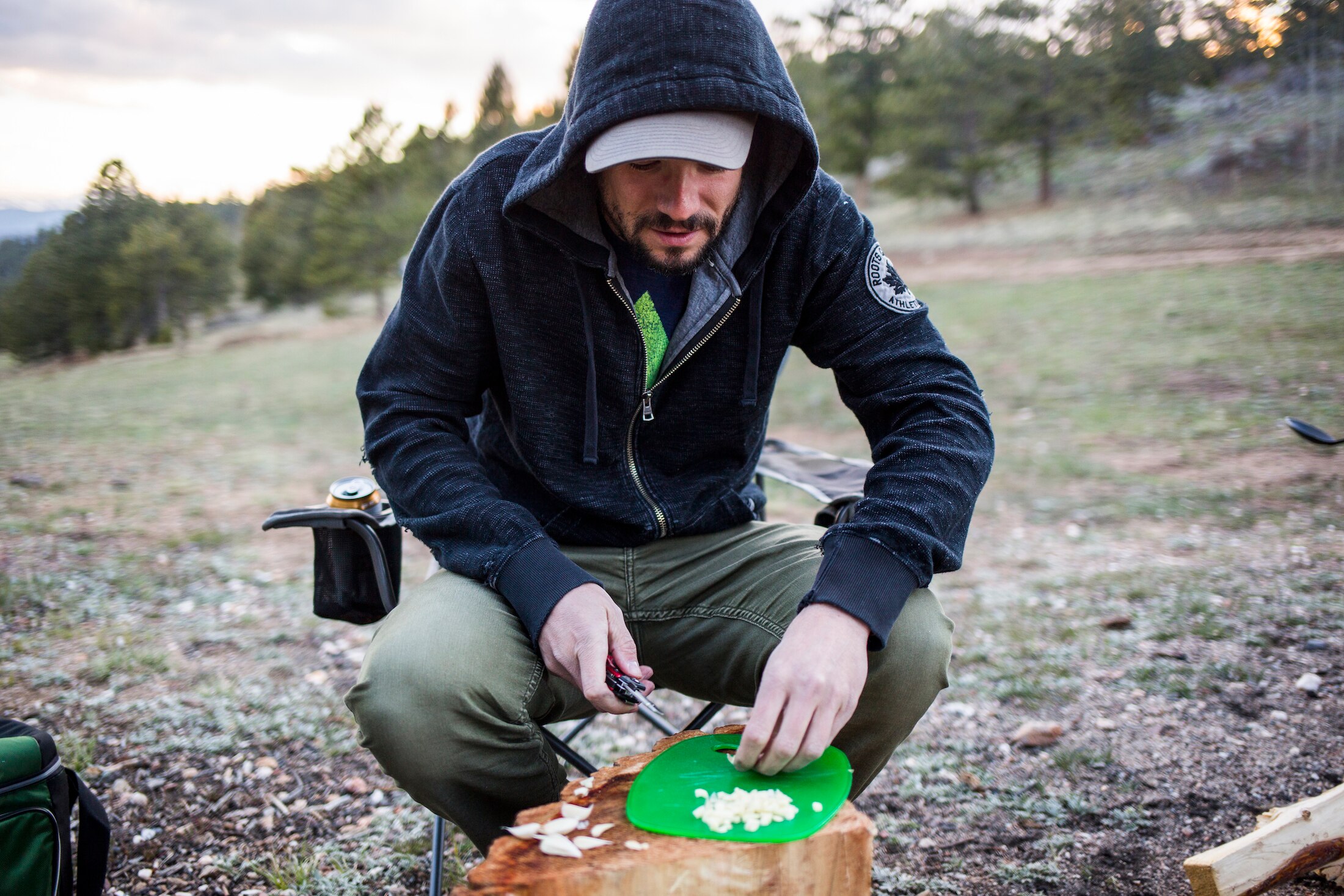
Step 2
Once at camp, build a fire. Make sure the fire pit is large enough to hold a medium fire next to the grill grate. If the fire pit doesn't have a grill grate, take the one you packed and prop it on a few large rocks, leaving 6 to 8 inches of room to move logs and hot coals around underneath it. Leave space to move food away from the fire in case it's cooking too fast. Coninuously add new logs to give yourself plenty of hot coals to work with. When some of the logs have burned down and are glowing red with gray ash, use tongs to move them under the grill grate. You want to avoid flames right underneath the grate. When you can hold your hand over the grate for just a few seconds before it's too hot, you're ready to start cooking. Keep adding wood and moving coals under the grate as needed while you cook
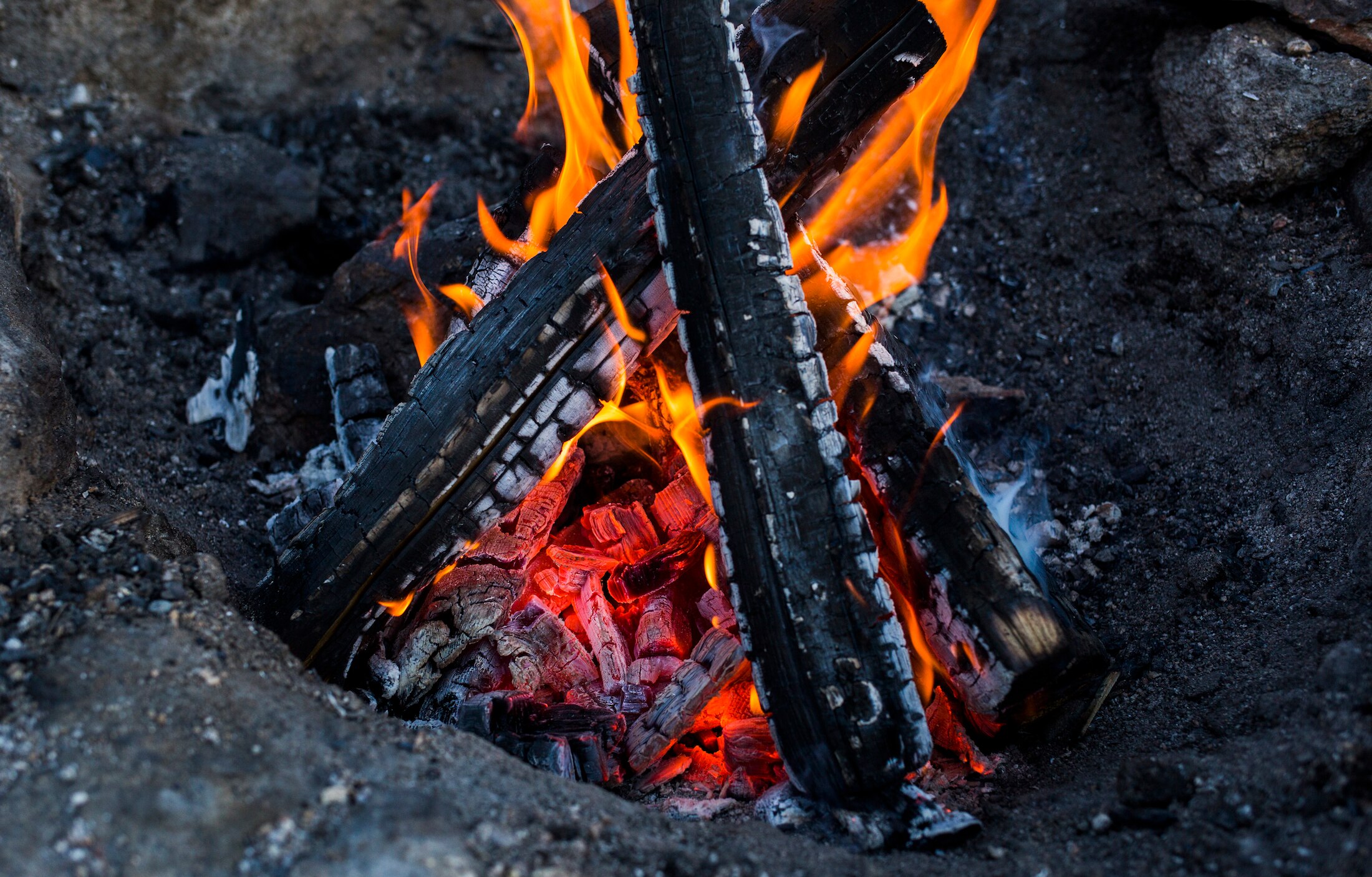
Step 3
Now you're reading to begin cooking. To start, heat olive oil in a pan and add chorizo, sauteéing for about 5 minutes.
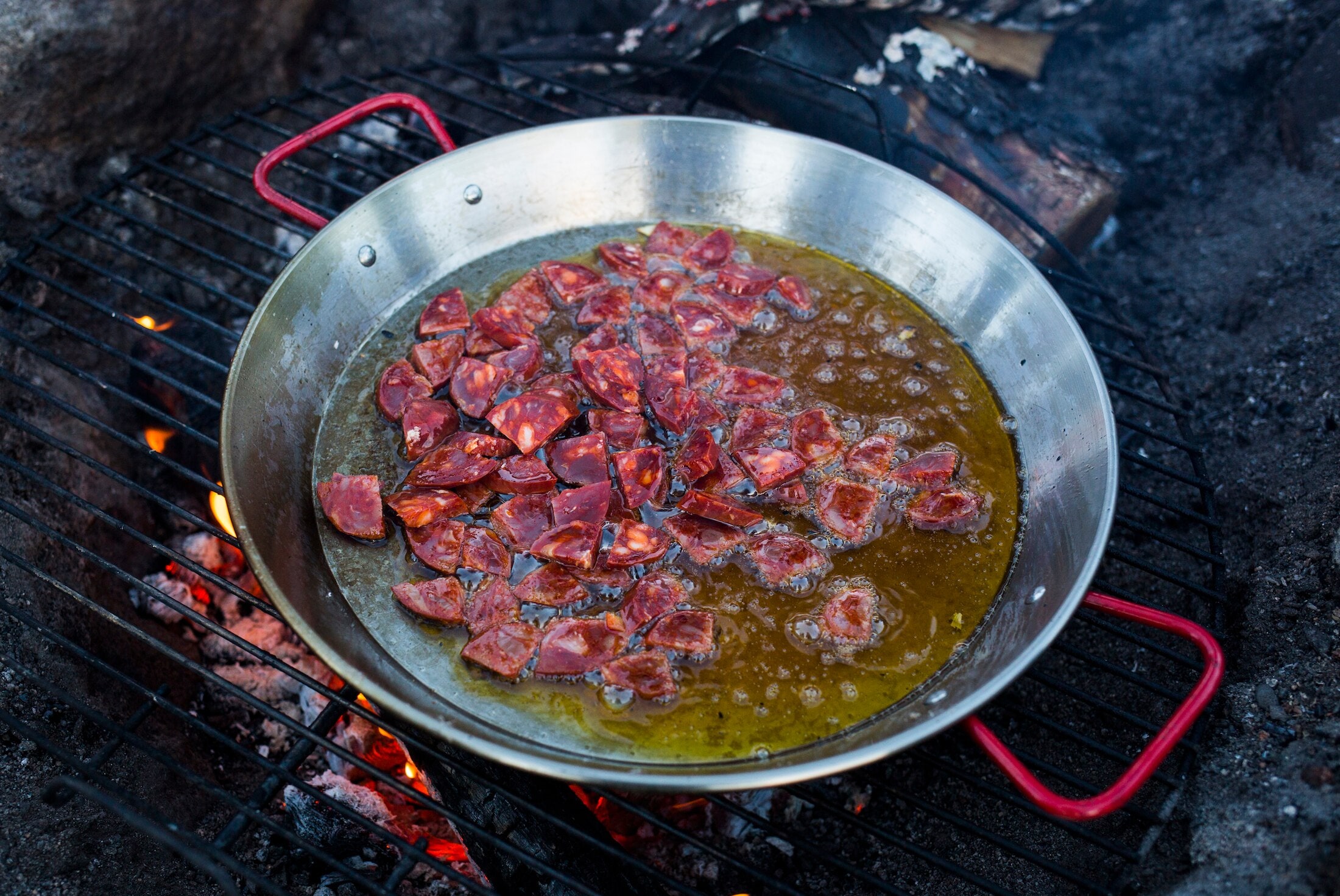
Step 4
Add the diced onions and bell peppers and stir-fry for 5 minutes. Add tomatoes and garlic and cook for another 10 minutes, until mixture has thickened slightly. This is called a sofrito, which serves as the base for other Spanish and Latin American dishes as well.
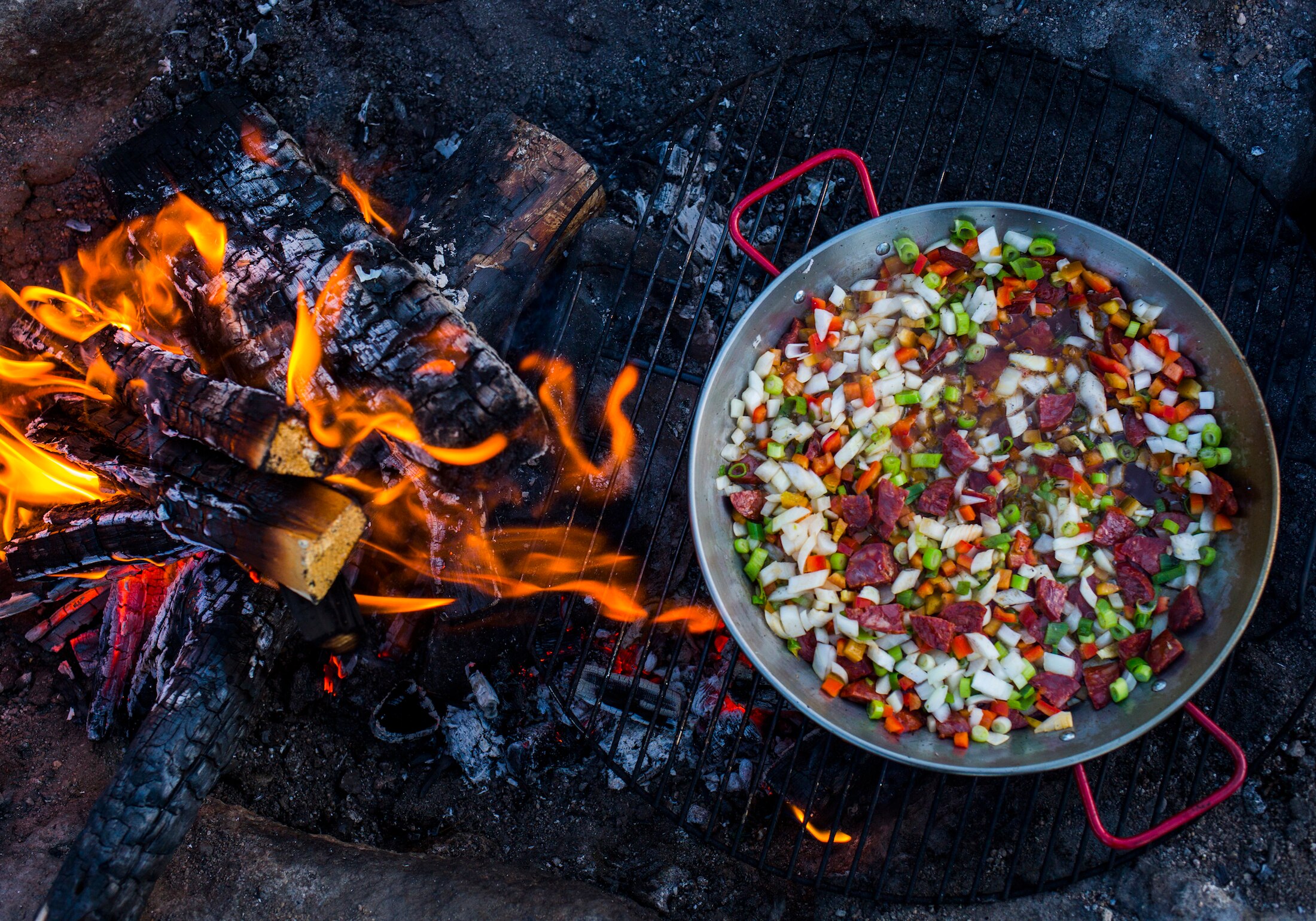
Step 5
Add the rice, chicken, paprika, peas and saffron (if using) and stir to combine. Add the chicken broth and stir until mixed well.
Step 6
At this point, it is important NOT to stir the paella. By not stirring you will allow the socarrat to form on the bottom of the pan. After about 10 minutes, if using, add any snails or fresh seafood, such as clams, mussels or shrimp. Arrange them evenly on top of the rice, and again, do not stir. Let the paella cook, uncovered, for about another 20 minutes, rotating the pan occasionally to make sure the bottom cooks evenly.
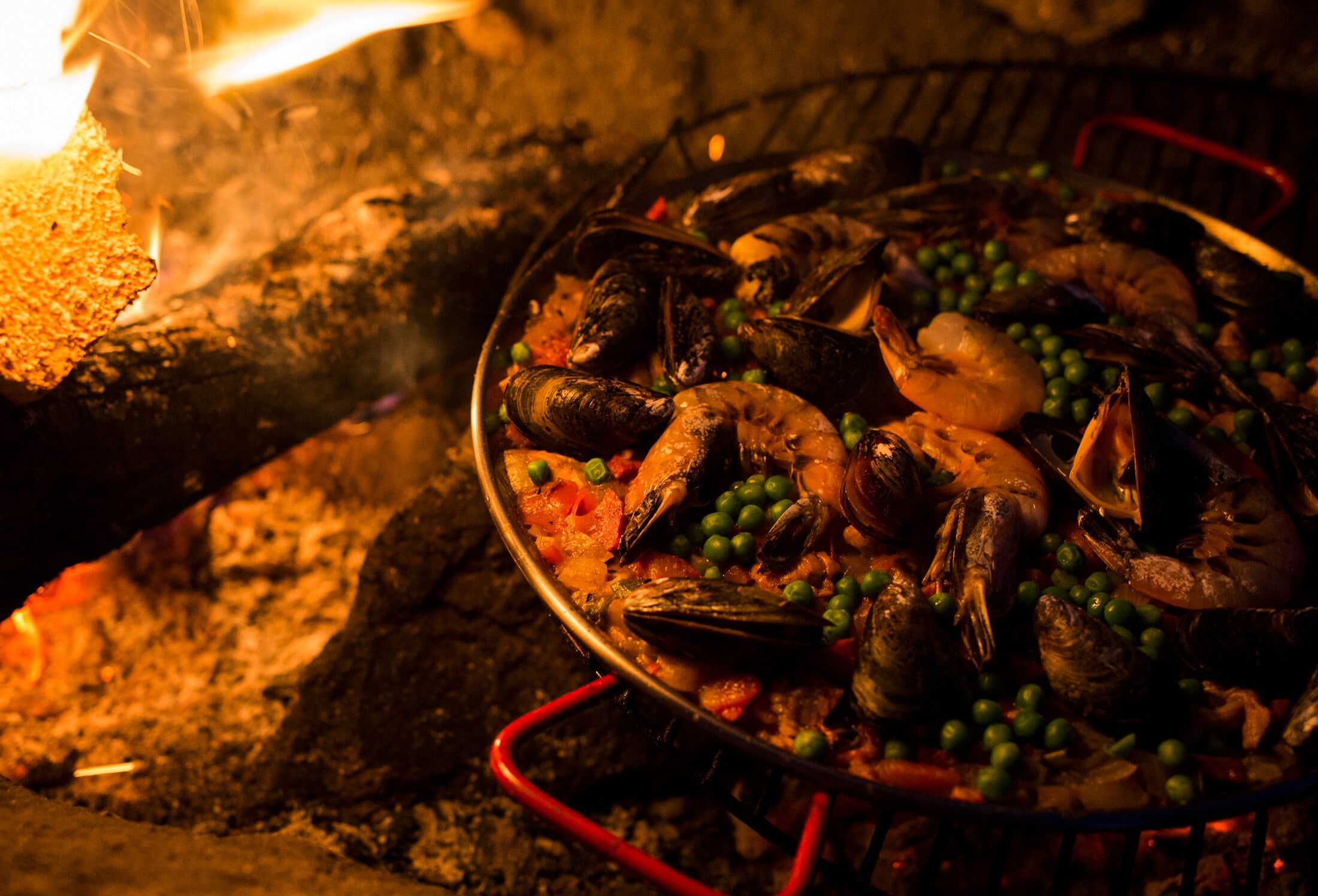
Step 7
The paella is ready when all the liquid has been absorbed, the socarrat has developed and the seafood has cooked through (discard any clams or mussels that did not open). When it's done, remove the pan from the heat, cover it with foil and let it sit for 10 minutes before serving.
Serve with piquillo peppers and lemon wedges on the side.
[All photos by Nick Cote]
